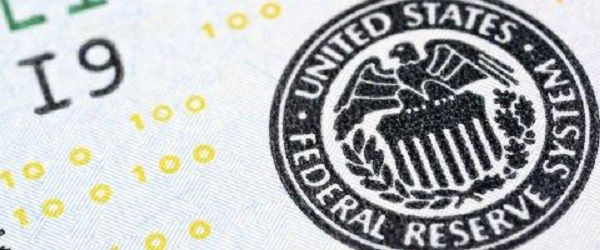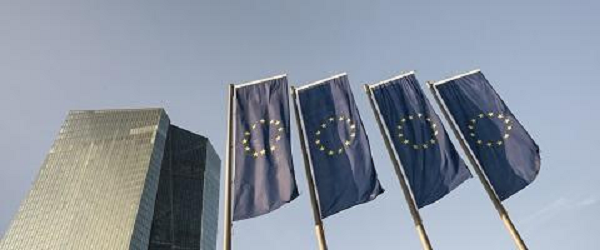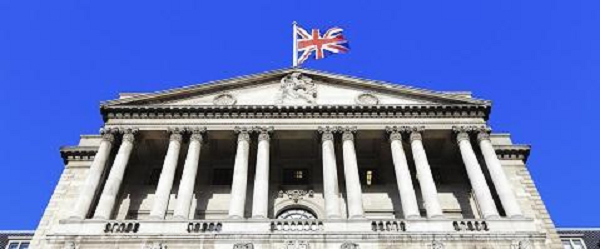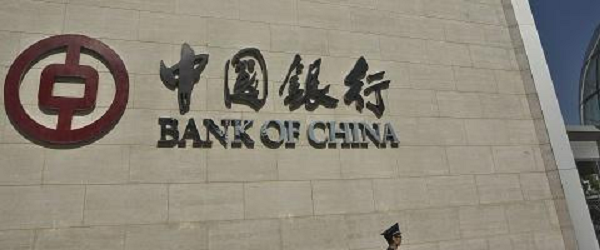Fortunately, the labour market has begun to show signs of picking up. U.S. added 271,000 jobs in October while in UK unemployment fell to a seven year low in three months to September.
Federal Reserve
At the FOMC meeting in September, the Federal Reserve predicted continued moderate improvement. The U.S. economy, as measured by GDP, is expected to grow 2.1% in 2015; 2.3% in 2016; and 2.2% in 2017.The core inflation rate will be higher, averaging 1.4% in 2015, 1.7% in 2016, and 1.9% in 2017. The inflation will thus likely remain below the Fed's 2.0% target inflation rate.
The unemployment rate is expected to fall between 5.0% in 2015; 4.8% in 2016, and 4.8% in 2017.

The Fed had declared that when employment numbers would begin to look up and when it is “reasonably confident†that inflation will move back to its 2 per cent target over the medium term, it would start raising rates. It has been somewhat successful in achieving steady employment rate. Post the release of the October jobs report, the Chicago Federal Reserve President Charles Evans told CNBC that the stronger-than-expected payroll number for October is "very good news" and supports his 2016 economic outlook of 2.5 per cent growth. The steady employment rate thus takes care of one of Fed’s concern with respect to rising rates.
The inflation figure has not yet been able to match the target figure yet. The FOMC members however believe that the factors holding inflation down like weak oil prices and a strong dollar will subside in coming months allowing more scope for the inflation figures to reach 2 per cent target.
So far the policy makers had considered it wise to wait on a rate increase until prices steadied. However, with few of the economic indicators looking up they now worry that postponing the decision further to raise rates might lead inflation to become too high.
If the recent developments and the sentiments of the Fed’s presidents are anything to go by, a rate hike in December looks certain.
ECB
ECB president Mario Draghi is confident that Europe's economic recovery would continue, "albeit at a somewhat weaker pace than expected". The ECB forecasts 1.4 per cent growth in the euro zone in 2015. The euro zone economy is expected to grow 1.7% in 2016, compared with its previous projection of 1.9%.
The euro zone central bank expects inflation in region to remain "very low" for some years as threats to economic growth rises. Draghi pointed out "Lower commodity prices, a stronger euro, somewhat lower growth, have increased the risk to a sustainable path of inflation towards 2%,†He also admitted that inflation could turn negative in the coming months. The bank expected inflation to be 0.1% for 2015, rising to 1.5% in 2016 and 1.7% in 2017.
Read: EUR/USD: A sneak peek into 2016
The labour force is expected to expand only moderately, dampened by discouragement effects from still high unemployment in some countries and adverse demographics in others. The unemployment rate, which has edged down to 11.1% in the second quarter of 2015, is expected to decline to 10.1% in 2017. In the euro area, employment is expected to grow by 0.9 % this year and to pick up to 1% in 2017.
Overall, the uncertainty surrounding the economic outlook shows few signs of abating. The ECB might thus choose to extend its asset purchase programme beyond its planned conclusion in September 2016.
Bank of England
The Bank of England predicts growth at 2.9% in 2015, 2.9% in 2016 and 2.7% in 2017. Inflation is forecast to be 0.6% in 2015, rising to 1.8% in 2016 and 2.1% in 2017. Average earnings growth is forecast to strengthen to 3.5% in 2015, edging up to 4.0% in 2016 and 2017.There prevails strong optimism that the UK economy has a good chance to regain stronger momentum in the medium term.
The BoE opined that the risks from emerging markets and lower prices for fuel, food and other imported goods would keep inflation below 1 per cent until at least the middle of next year. Inflation would continue to remain low even if rates were left unchanged at the record low of 0.5 per cent. However, there is very little risk of persistent deflation, the bank said. By the end of 2017, it believes inflation will move slightly above the 2% target.

Carney, in his letter to Osborne explained why inflation is more than 1 per cent off its 2 per cent target, He said, 'The single most important reason for below-target inflation remains the sharp falls in energy prices since the middle of last year. He however added, 'In the absence of further falls in commodity prices, inflation rates close to zero are unlikely to endure much beyond the end of the year.'
The Bank's projections show that inflation in two years' time may be slightly above its 2 per cent target if the market expectations for rates are followed, and that point to a rate rise not coming until at least the end of 2016.
Read: GBPUSD: BoE liftoff could be delayed, bears could target 1.45
With inflation forecast to remain low, the bank might opt to keep interest rates on hold for a prolonged period. Bank of England chief economist Andy Haldane, said in September that the case for UK raising interest rates is "some way from being made" and that negative rates may still be needed. Bank Governor Mark Carney has already said the decision on whether to raise rates will come into ‘sharper relief’ around the turn of the year, although financial markets are not pencilling in an increase until the end of 2016 or beginning of 2017.
Ian McCafferty is the lone hawk in the monetary policy committee who support increasing rate to 0.75 per cent.
RBA
Australia's central bank softened its economic outlook for 2016. It is currently in an observant mode wherein it wants to watch the impact of the 2015 double interest rate cuts play out. The RBA sounded more positive about the labour market, business conditions and a lower exchange rate.The central bank trimmed its 2016 figures to 2.5-3.5 per cent, from 2.75-3.75 per cent, expecting it to gradually increase to 3.0-4.5 per cent by the end of 2017. The downward revision of GDP reflected slower population growth which is now expected to be an annual 1.5 per cent over the next couple of years. The RBA cut near term inflation forecasts by 0.5 pct and sees underlying inflation around 2 per cent for most of 2016. Employment growth to remain relatively strong in 2016 while jobless rate to hold steady. The RBA sees unemployment between 6-6.25 per cent over next year, then falling gradually in 2017. The slowdown in average national house price growth to 2.3% in 2016 is attributed to the moderation in price growth in both Sydney and Melbourne. Data suggest pick up in non-mining investment unlikely in the near term.
The RBA is of the opinion that there is a "reasonable chance" for the local dollar to fall further once the Fed starts tightening its monetary policy in December.
BOJ
Japan's economy shrank an annualized 0.8 per cent in the third quarter. The economy had suffered 0.7 per cent contraction in the previous quarter as well. Decline in capital spending and weakening external demand across Asia pushed Japan into a technical recession for the second time since PM Abe came into power three years back. The BOJ estimated the GDP to grow at 1.2 per cent this fiscal year, down from an earlier forecast of 1.7 per cent.The central bank had, in April pushed back its estimate for reaching its 2.0 per cent inflation target to the first half of 2016 from the current fiscal year. Post the disappointing economic scenario reported in the third quarter, it seems unlikely that that the BOJ can meet its inflation target in fiscal 2016 or even in fiscal 2017. The Japanese government plans to raise the sales tax to 10 per cent from the current 8 per cent in April 2017 with an objective to push up consumer price inflation by 1.3 per cent.
Read: USD/JPY: elusive highs, but bullish
The BOJ is trying to bring an end to decades of deflationary pressure with its unorthodox quantitative and qualitative monetary easing program. The fast aging Japanese society now demands structural reform to break through supply-side constraints including labor shortages.
BOJ Governor Haruhiko Kuroda who is confident of a consumer driven recovery, have repeatedly downplayed the need for fresh policy stimulus. When asked if he saw "no need" to provide an extra budget to stimulate demand right away, Economics Minister Akira Amari nodded. From the statements and responses of the top policy makers it is evident that any additional stimulus is not in the pipeline. Research Analysts at Nomura, expect additional monetary easing by the Bank of Japan only in April 2016.
PBOC
Chinese authorities stated that annual average economic growth will be around 6.5% between 2016 and 2020. At the 5th plenum the CPC pledged to increase the contribution of consumption to growth and further rebalance the economy toward services.Consumer price inflation expected to remain low in 2015 as global prices for food and other commodities continue to remain depressed. However it is likely to rebound slightly in 2016 as prices start to recover. Inflation forecasts are revised down for 2015 but less so for 2016. Current account surpluses will remain stable as global commodity prices recover. Lower revenues may push the fiscal deficit above the indicative target of 2.7% of GDP in 2015. Further widening of the budget deficit is expected in 2016 as more of local governments’ off-budget activities are brought on budget.

The government will continue with financial liberalizations. The "One Belt One Road" initiative will be the cornerstone of China’s opening up strategy.
The PBOC is likely to unleash another wave of monetary policy easing in the months ahead to enable smooth transition to more a consumption-led growth model.
Citi slashed their forecasts for GDP in 2016 and 2017 by a significant margin. It now expects China’s economy to grow by 6.3% in 2016, down from 6.7% seen previously. Citi’s 2016 forecast is in line with that offered by the IMF in its latest world economic outlook. It is however significantly below the 7.0% level expected by the World Bank and Asian Development Bank. They also expect CPI to remain below 2% until the final quarter of 2016.
Read also other related articles about what 2016 could bring for the markets:
Currencies
EUR USD Forecast 2016
GBP USD Forecast 2016
USD JPY Forecast 2016
Central Banks
ECB Forecast 2016
RBA Forecast 2016
PBoC Forecast 2016
FED Forecast 2016
BoE Forecast 2016
BoJ Forecast 2016
SNB Forecast 2016
Commodities
Gold Forecast 2016
Note: All information on this page is subject to change. The use of this website constitutes acceptance of our user agreement. Please read our privacy policy and legal disclaimer. Opinions expressed at FXstreet.com are those of the individual authors and do not necessarily represent the opinion of FXstreet.com or its management. Risk Disclosure: Trading foreign exchange on margin carries a high level of risk, and may not be suitable for all investors. The high degree of leverage can work against you as well as for you. Before deciding to invest in foreign exchange you should carefully consider your investment objectives, level of experience, and risk appetite. The possibility exists that you could sustain a loss of some or all of your initial investment and therefore you should not invest money that you cannot afford to lose. You should be aware of all the risks associated with foreign exchange trading, and seek advice from an independent financial advisor if you have any doubts.
Recommended Content
Editors’ Picks
EUR/USD edges lower toward 1.0700 post-US PCE

EUR/USD stays under modest bearish pressure but manages to hold above 1.0700 in the American session on Friday. The US Dollar (USD) gathers strength against its rivals after the stronger-than-forecast PCE inflation data, not allowing the pair to gain traction.
GBP/USD retreats to 1.2500 on renewed USD strength

GBP/USD lost its traction and turned negative on the day near 1.2500. Following the stronger-than-expected PCE inflation readings from the US, the USD stays resilient and makes it difficult for the pair to gather recovery momentum.
Gold struggles to hold above $2,350 following US inflation

Gold turned south and declined toward $2,340, erasing a large portion of its daily gains, as the USD benefited from PCE inflation data. The benchmark 10-year US yield, however, stays in negative territory and helps XAU/USD limit its losses.
Bitcoin Weekly Forecast: BTC’s next breakout could propel it to $80,000 Premium

Bitcoin’s recent price consolidation could be nearing its end as technical indicators and on-chain metrics suggest a potential upward breakout. However, this move would not be straightforward and could punish impatient investors.
Week ahead – Hawkish risk as Fed and NFP on tap, Eurozone data eyed too

Fed meets on Wednesday as US inflation stays elevated. Will Friday’s jobs report bring relief or more angst for the markets? Eurozone flash GDP and CPI numbers in focus for the Euro.